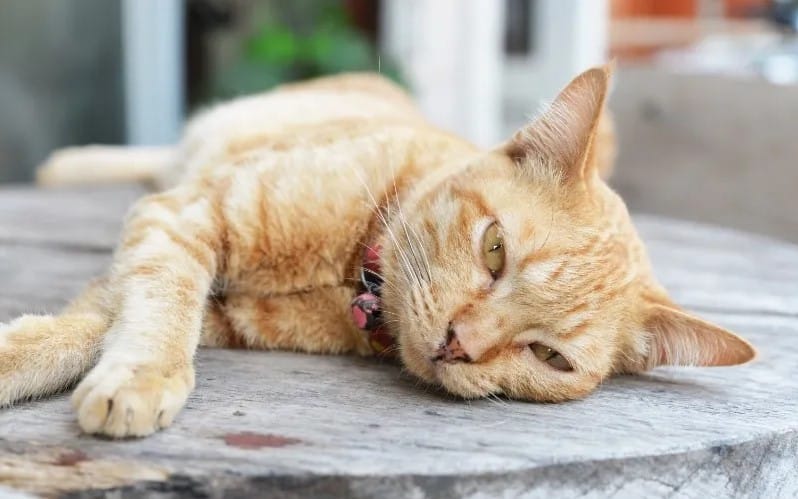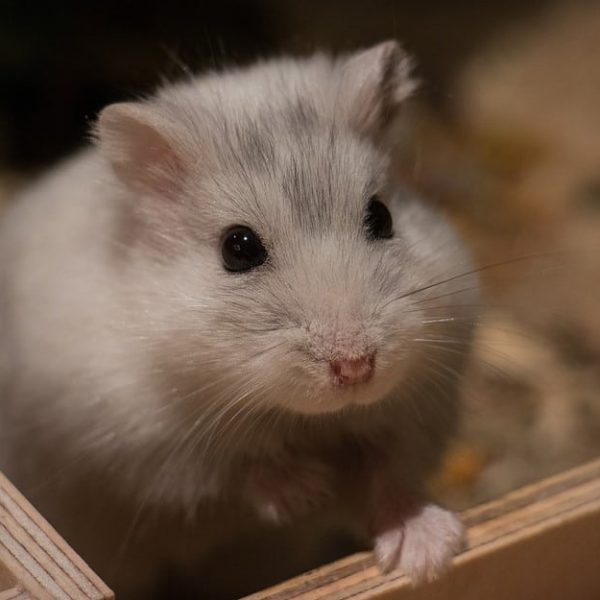Breeding and caring for cats at home is one of the favorite habits of many people, and cats, like humans and other living creatures, suffer from many diseases and health problems. Therefore, it is important to know the symptoms and causes of these cat diseases and how to treat and prevent them to keep your cat healthy. Here are some common diseases that cats can get.
1. CANCER:
Cancer is a condition in which cells grow and reproduce uncontrollably, invading surrounding tissue. As with humans, cats can get various kinds of cancer. The disease can spread throughout the body or be confined to one area, like a tumor. Let’s talk about the most commonly diagnosed cancers in cats are:
1. Squamous cell carcinoma of the ear, eyelid, or nose is skin cancer caused by significant sun exposure. Light-colored and white cats are more susceptible to squamous cell carcinoma.
2. Lymphosarcoma or lymphoma (LSA), consider one of the most common types of cancer affecting cats. It is a cancer of the lymphocytes ( a type of white blood cell linked with the immune system ) and lymphoid tissues that are present in the lymph nodes, spleen, liver, bone marrow, and GI tract. Some reports indicated that 40% of all reported cat cancers are due to LSA.
The exact cause of Lymphosarcoma is unknown so cats who are positive for feline leukemia virus (FeLV) are more probably to be developing lymphoma than cats that test negative for the virus.
There are some symptoms of cancer in cats can include:
- Weight loss
Lumps (which are not always malignant, but are always worth having a veterinarian examine)
Scaly and/or red skin patches
Diarrhea or vomiting
Difficulty breathing, urinating, or defecating
Abnormal discharge from any part of the body
Sudden lameness
Persistent sores or skin infections
Listlessness, lethargy, or other marked change in behavior
Bad breath
Decreased or loss of appetite
Swelling
Change in behavior
2. FELINE IMMUNODEFICIENCY VIRUS (FIV):
Feline immunodeficiency virus (FIV) is a disease that compromises a cat’s immune system, which reduces the function of the immune system and causes AIDS as well. This virus FIV is spread through the saliva of an infected cat, primarily by biting, outdoor cats, male cats, and older cats are most susceptible to developing the virus.
FIV is diagnosed through bloodwork. Once the virus (FIV) enters the bloodstream, may not show symptoms for months or even years after becoming an active disease. There’s no effective vaccine against FIV. If your cat is demonstrating any of the following symptoms, you should visit your veterinarian:
- Fever
Fatigue
Weight loss
Skin and respiratory infections
Disheveled coat
Vomiting
Diarrhea
Sneezing
Discharge from eyes or nose
Anemia
Oral infections
Dental disease
Hair loss
FIV TREATMENT
Unfortunately, there is no treatment or cure for FIV. Treatment focuses to help ease the secondary effects of the feline immunodeficiency virus. These may prescribe some of the following treatments:
- Medication for secondary infections
Immune-system-enhancing drugs
Anti-inflammatory drugs
Healthy diet
Parasite control
3. Feline Leukemia Virus (FeLV):
Feline leukemia virus (FeLV) is a cancer-causing retrovirus and one of the most common infectious diseases in cats, and it can be lethal because it weakens the cat’s immune system. FeLV can be transmitted from infected cats when the transfer of saliva, blood, urine, or nasal secretions is involved. Mothers who are FeLV-positive also can transmit the virus to their kittens through breast milk or even while they are in the womb. To avoid the virus you should test any new cat entering a household.
Symptoms of FeLV include:
- Seizures or neurological disorders
Various eye conditions
Persistent diarrhea, and vomiting
Persistent fever
Skin, urinary or respiratory infections
Weight loss
Loss of appetite
Lethargy
Enlarged lymph nodes
FeLV can cause anemia, kidney disease, lymphosarcoma, and infertility. There is no cure, cats can live long healthy lives with supportive care and treatment of symptoms, purpose is to reduce the effects on the immune system.
4. DIABETES:
Cats can suffer from diabetes if they are having to lack the hormone insulin or inadequate insulin response. This cause high levels of sugar glucose in the blood, when a cat does not produce insulin or cannot utilize it normally. Like humans, cats too need sugar in the form of glucose for energy. So, achieving blood glucose requires insulin, which is a hormone produced by the pancreas.
Diabetes can be classified into 2 types:
In Type I, blood glucose concentrations are high by a lack of insulin production
In Type II, glucose levels are high because of impaired insulin production over with an inadequate response to the hormone
Cats with type II diabetes can develop type I diabetes if you don’t get an early diagnosis of your cat.
Feline diabetes disease can be caused by genetics, pancreatic disease, some medications, abnormal protein deposits in the pancreas, and obesity. Diabetes symptoms in cats include:
- Weight loss
Excessive thirst and Increased urination
Lethargy
Dehydration
Change in appetite
Urinary tract infection
Sweet-smelling breath
5. Ringworm:
Ringworm or also known as dermatophytosis is a common fungal infection of the skin, nails, and hair. Despite the name, ringworm it’s caused by a fungus, not a worm, and can cause a circular rash (shaped like a ring) with itching, pain, redness, and dryness. ringworm can affect any type of domesticated animal and humans by direct contact with an infected symptomatic animal, direct contact with an asymptomatic carrier, or contact with spores in the environment.
This disease leads to patchy, circular areas of hair loss with central red rings. The most common sites affected by ringworm are the face, ear tips, feet, and tail. Skin lesions usually show one to three weeks after exposure, and the fungal spores can remain dormant on combs, brushes, bedding, carpet, furniture, food, bowls, or other environmental surfaces for up to 17 months.
Luckily, ringworm can be treated with many topical and oral medications. Can be by application of creams, ointments, or shampoos that contain a special medication to kill the fungus and in some cases by oral therapy. For treatment to be successful, is to treat the cat’s environment to stop the infection from recurring.




Leave a Comment